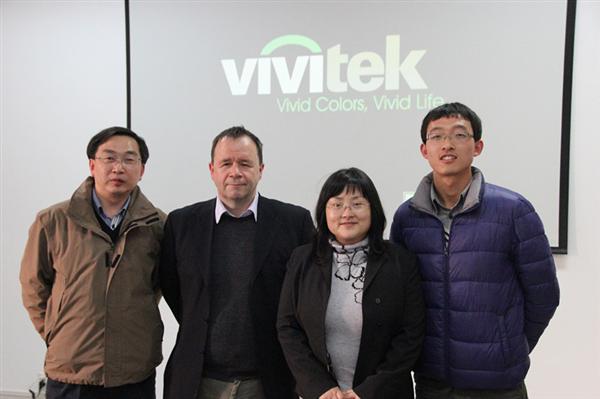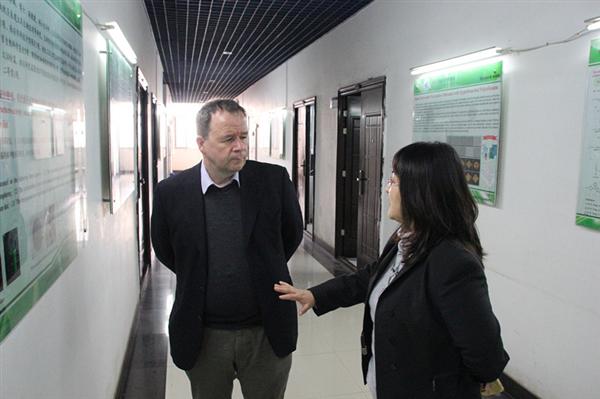Georg H. Mehl教授(University of Hull)應邀來我系進行學術交流
應張秋禹教授的邀請,G. H. Mehl教授于11月20日下午2:30在理學院383會議室為化學系師生做了題為“Design and investigation of liquid crystal superlattice forming gold nanoparticles – a route to plasmonic metamaterials”的學術報告。報告會上,G. H. Mehl教授與化學系師生就相關問題進行了交流與討論。報告結束后,張秋禹教授帶領G.H. Mehl教授參觀了實驗室,并向G.H. Mehl教授介紹了課題組的研究方向及研究進展。
Georg H. Mehl教授簡介:
Georg Mehl obtained his Masters degree (Dipl.Chem.) in Chemistry and his PhD at the University of Freiburg (Germany) in the group of Prof. H. Finkelmann. He joined the Liquid Crystal group in Hull as a Post-Doc (with Prof. J. W. Goodby), became Lecturer in 1997 and is currently Professor (Chair) for Organic and Materials Chemistry. He has held the DERA/Qinetiq Lectureship at Hull and visiting Professorships at the universities of Patras (Greece) and Marseille-Luminy (France) and he has coordinated and participated in a number of European research projects. His research interests are in functional soft self assembling systems, particularly in organic-inorganic nano-composites with a focus on optical properties and in photoactive systems.
學術報告摘要:
Metallic nanoparticles (NPs), in most cases gold (Au) NPs, are currently exploited in a wide range of applications which rely on their plasmonic resonances. This ranges from molecular biosensing to solar energy conversion or cancer phototherapy. Forming dense arrangements of such resonant structures allows the creation of artificial composites, termed metamaterials. They are an attractive new class of materials, as they promise to generate synergistic materials properties unavailable to their constituents. Most current realisations of metamaterials rely on top-down techniques, excellent for the design of planar materials. Bottom-up approaches based on the self-assembly of metal NPs permit potentially the convenient generation of bulk metamaterials. For such a purpose the use of liquid crystal (LC) systems is very promising, as the liquid crystalline state allows for the control of assembly by appropriate molecular design. Critical design parameters which need to be considered are the control of the nature of the LC phase, the size of the NPs and the adressing of the two dimensional (2D) and three dimensional (3D) self assembly of the NPs. Important is not only to generate LC-NP nanocomposites synthetically but also to address the density of NPs and their spatial assembly in the compositions.
In this context work on realtively small spherical Au NPs, functionalized with nematogenic groups which form 2D and 3D self-assembly structures is quite useful. Important featrues to be controlled are NP size, and the number and type of the organic content, espcially that of the number and size of the mesogenic groups.
Means of controlling the size of the NPs as well as the size of the organic corona via a range of synthetic approaches will be presented and the correlation of phase structures, phase transition temperatures and 2D and 3D packing of the Au NPs with the size and size distribution of the particles and the size and number of the mesogens attached to the particles will be discussed. Based on these results the design and investigation of a LC-NP nanocomposite with plasmonic metamaterial properties will be presented.

